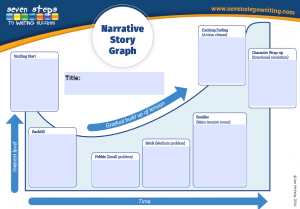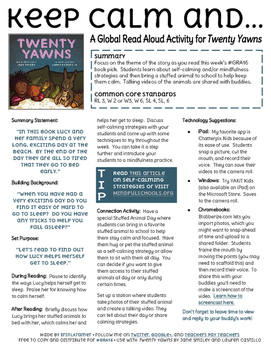 Here is a Story Graph from Mundingburra!
Here is a Story Graph from Mundingburra!
Pax – Week 5
Word Meaning in Context: A Whiteboard Strategy
by Jen Jones
We are very excited to have Jen Jones create a video for our collaboration to promote word meaning in context. This is one area often identified needing further work in our reading assessments.
Thank you Jen. 🙂
Twenty Yawns
First Graders typed things they would say goodnight to in their rooms in a GoogleDoc and then learned how to copy and paste into a Word Cloud (abcya.com). https://spark.adobe.com/video/X16wvW1pwfVdi
Pax Chapter 15
What does Pax recall with fondness from his home? What parts of his old home did Pax loathe?
Pax & BFG – Week 6
Narrative Story Graph –
(Seven Steps to Writing Success)
What are the Seven Steps?
‘The Seven Steps is a unique system that chunks writing into seven main techniques.
1 Plan for Success
2 Sizzling Starts
3 Tightening Tension
4 Dynamic Dialogue
5 Show, Don’t Tell
6 Ban the Boring
7 Exciting Endings
The chunking concept is modelled on the way we learn sport. Take tennis for instance.
First we learn the individual skills – forehand, backhand, serve, volley and smash.
Then we practise the skills over and over until they go into ‘muscle memory’.
Finally we put the skills together to play a game.
Yet in schools we often ask students to ‘write a story’ – in other words play the whole ‘tennis match’. Hence they struggle.
The Seven Steps program works for ALL text types – Narrative, Persuasive, Recount and Informational.’
by Jen McVeity
Have a look at the completed narrative story graphs.
Download the Narrative Story Graph template (PDF 432KB)
Now see if you can map Pax or BFG as a class on the story graph.
BFG – Week 5
Welcome to week 5! This week we will explore the wonderful vocabulary that Roald Dahl introduces us to, throughout the BFG. I have two activities for you to do this week. One of which I have sourced from the slideshow that the wonderful and clever creators – Sean Fahey @SEANJFAHEY) and Michele Waggoner (@michelewagg)- have published. The other is a fun activity that I know my class is going to love, I hope that your classes do as well!
Activity 1- Google Hyper Doc – “Context Clues”
This activity Explores the meaning of words develops students writing and knowledge. In this activity a excerpt of text is analysed. What the students need to do is analyse the words surrounding the “vocabulary word” to decide on a potential meaning. This is a great way to lead discussion about words in context. Simply click on this link to explore “Context Clues” in the chapters that we are looking at this week.
I thank Sean and Michele for allowing us to use their Google Hyper Doc this week!
Activity 2 – Wonderous Wordies ( Gobblefunk)!
To extend students use of vocabulary and to analyse the structure of words I have created a Padlet that allows students to share their “gobble funk” words. Instructions for the activity can be found on the Padlet. It is moderated, so please allow some time for publishing to occur.
Don’t forget to have a syllable that gives the reader a clue about what the word means, and then have fun with the other syllables!
I hope that you enjoy the activities for this week!
Mrs Helena Tully ( QLD Tech Brekkie Crew )
PAX -Sketchnoting with 6C
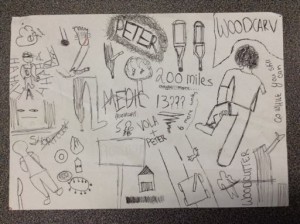

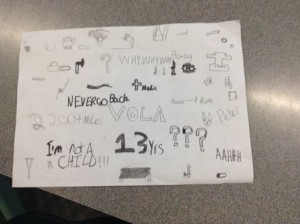
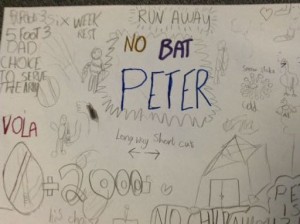
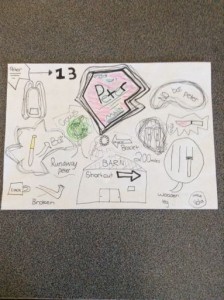

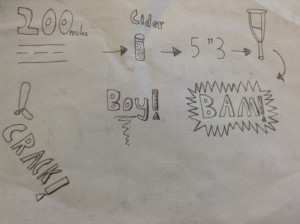

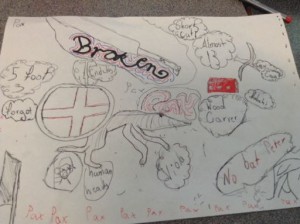
 These are some of our sketches we created after reading Chapter 8.
These are some of our sketches we created after reading Chapter 8.
BFG – Week 4
Character Hot Seating
You have been in the BFG and Sophie’s world for a few weeks now and have learnt more about them and some of the other characters in the book. In a classroom students often have different opinions on why or what motivates a character to do and act a certain way. This activity allows you to form opinions about a character.
TASK
1. In pairs choose a character you would like to ask specific questions to.
2. Create a list of 5-10 questions.
3. Have one child at the front of the room sit in a chair.
4. This child assumes the identity of one of the characters from the text.
5. The class then asks the character questions.
6. The child in the seat answers questions in character.
Pax – Week 4
Character Hot Seating
You have been reading Pax for a few weeks now and have learnt more about him and some of the other characters in the book. In a classroom students often have different opinions on why or what motivates a character to do and act a certain way. This activity allows you to form opinions about a character.
TASK
1. In pairs choose a character you would like to ask specific questions to.
2. Create a list of 5-10 questions.
3. Have one child at the front of the room sit in a chair.
4. This child assumes the identity of one of the characters from the text.
5. The class then asks the character questions.
6. The child in the seat answers questions in character.
